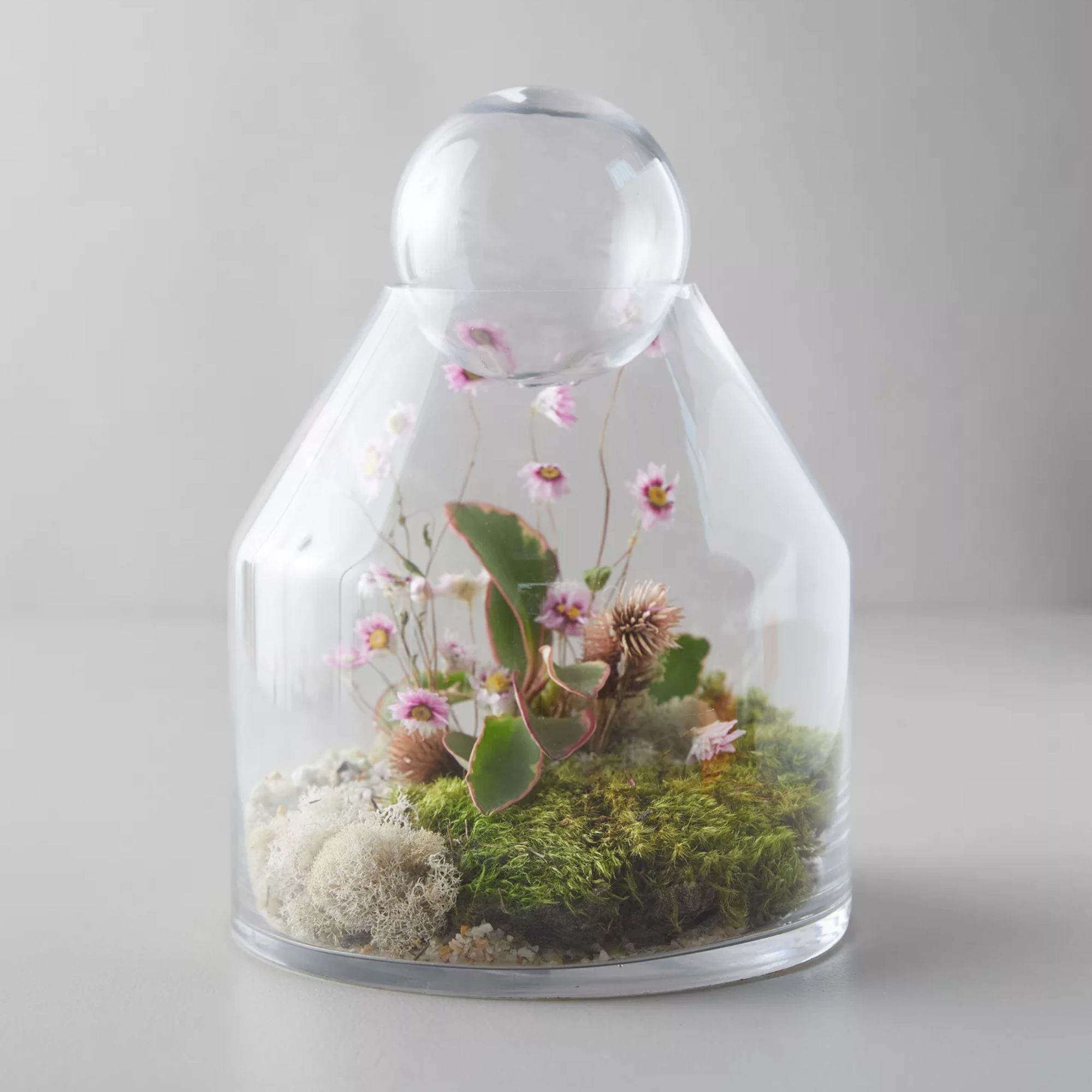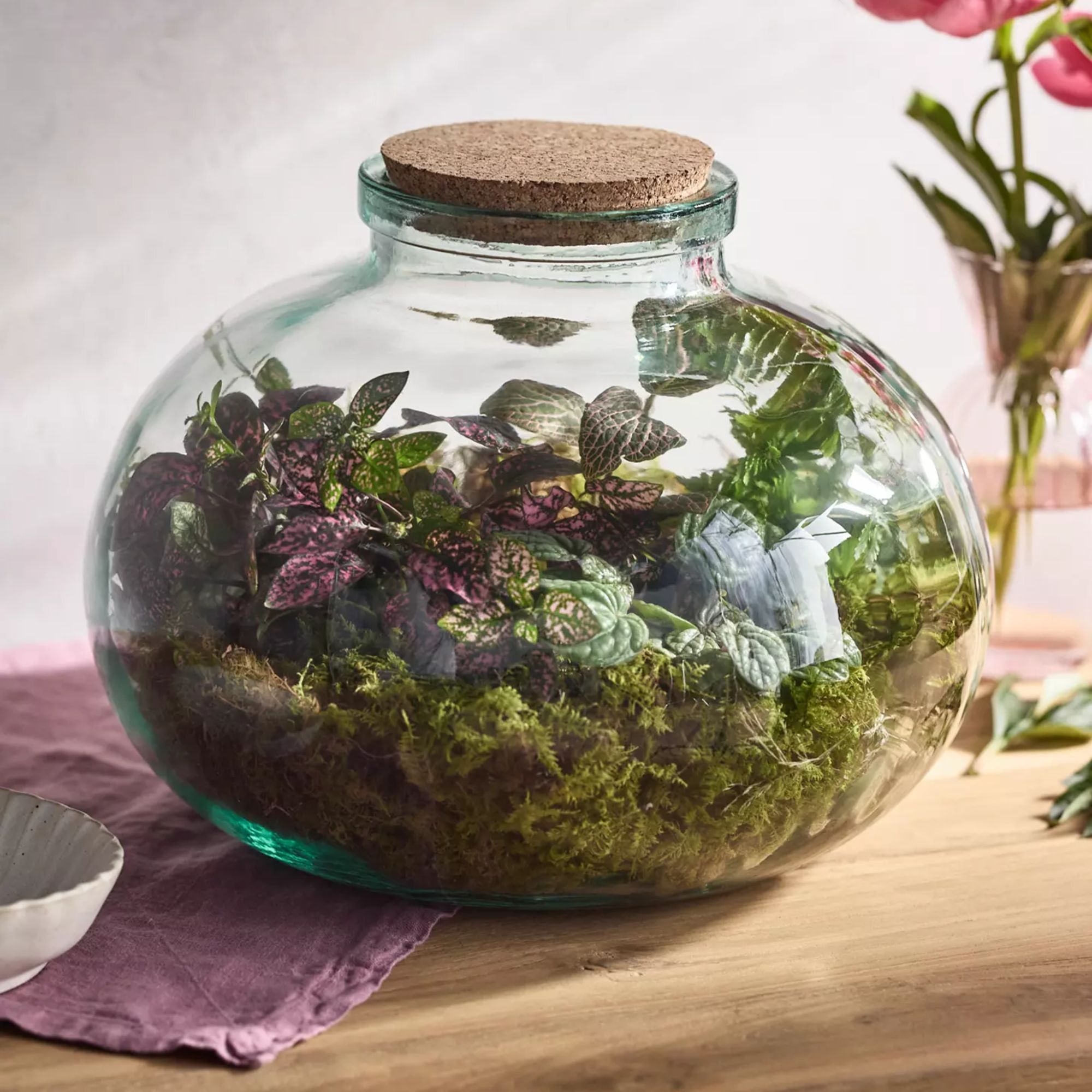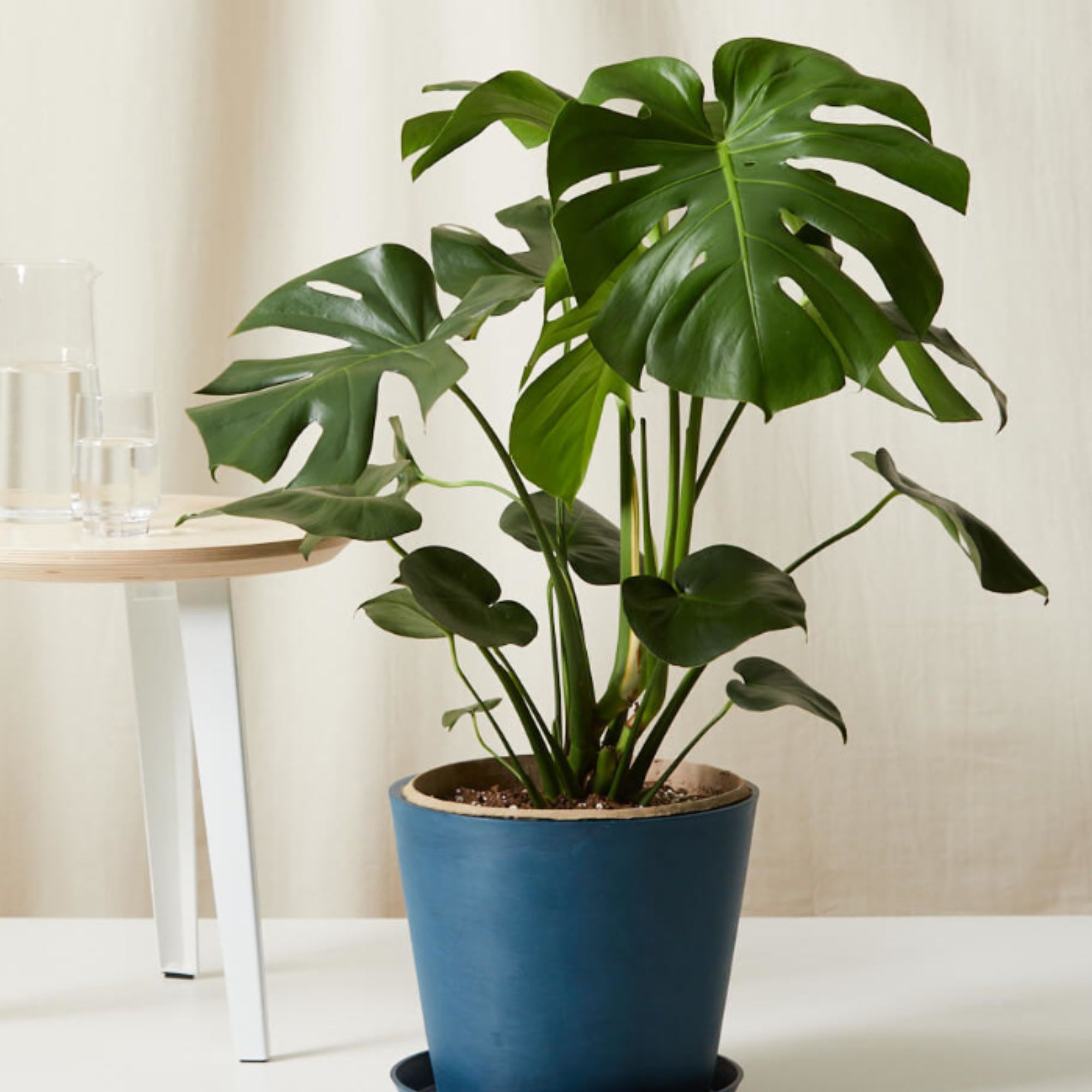Terrariums vs houseplants – experts reveal which is best for your home
This is all you need to know about the only options for indoor greenery
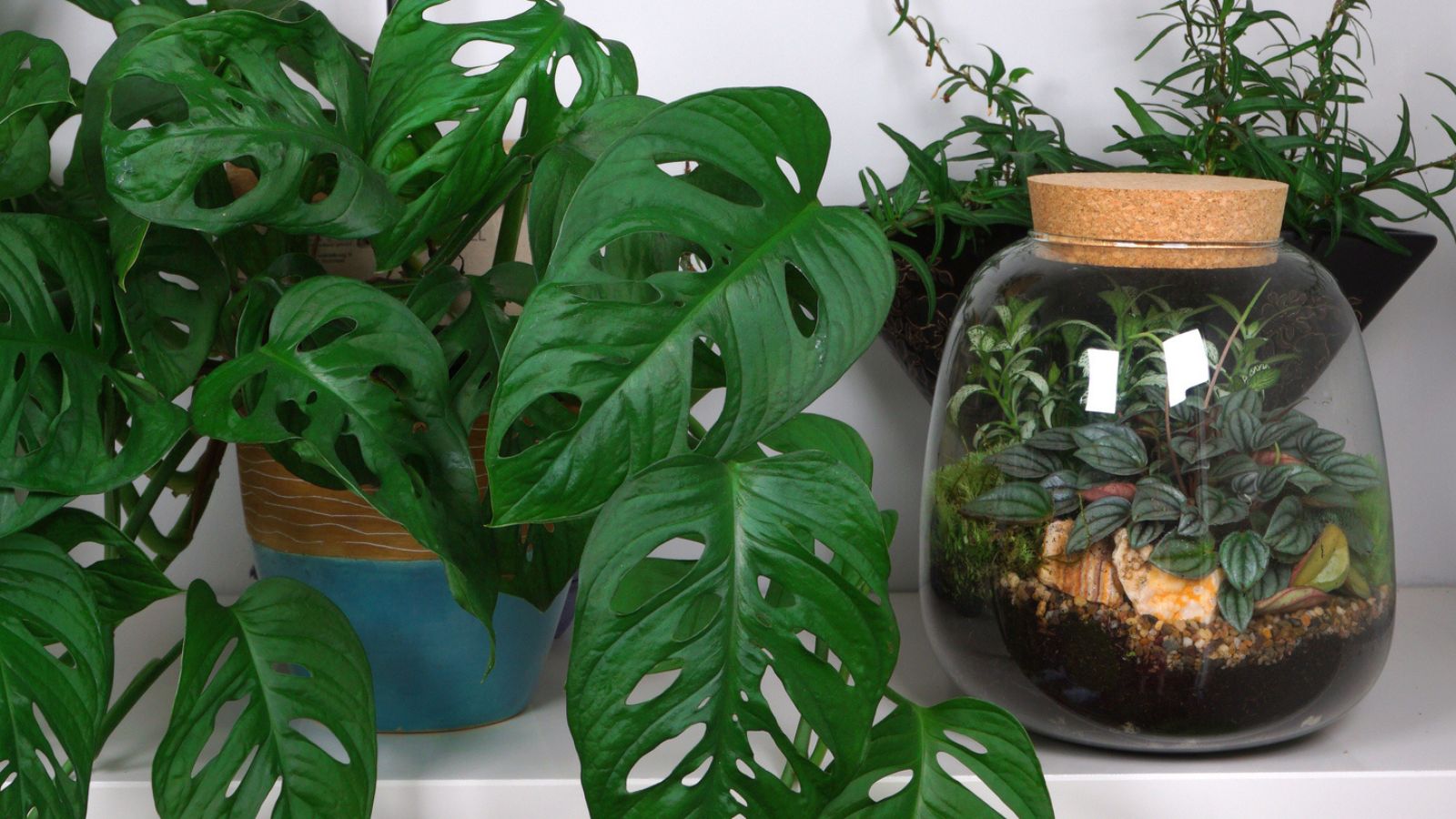

When it comes to houseplants, you really only have two options: a plant in a pot or a plant in a terrarium. However, it isn't always obvious which option is best for your home. They're very similar, so it's hard to see if there's any real difference between the two options.
I spoke to a plant expert about the benefits and drawbacks of both, and she gave me some great advice about the key differences between the two.
The basic distinction is that terrariums are great for spaces where temperature can be a little variable, but houseplants are best in rooms where you have closer control over conditions. However, there are lots of other little differences to bear in mind.
What's the difference?
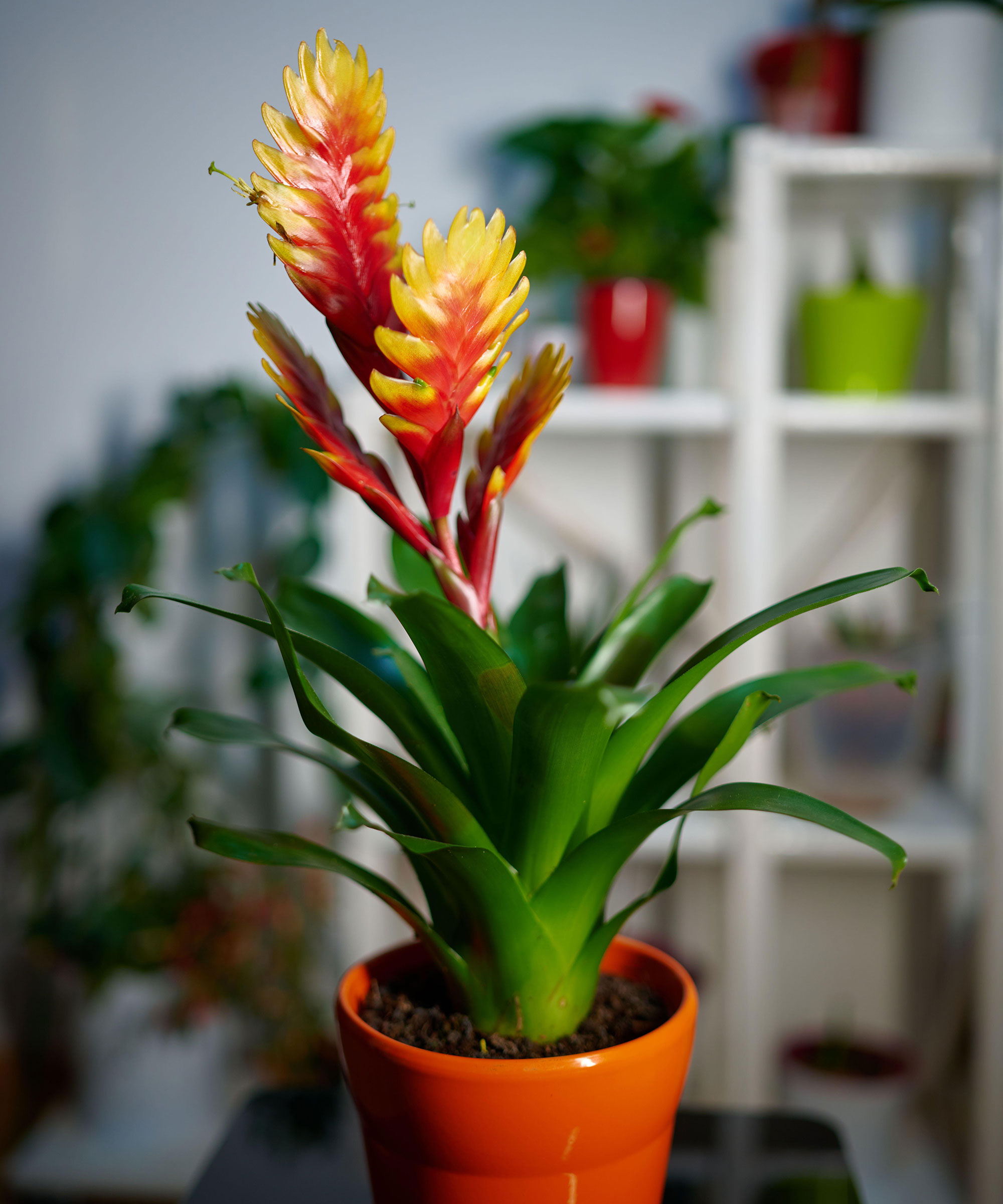
Houseplants are plants that thrive indoors and bring greenery, fresh air, and color to a space.
Terrariums are glass enclosures for plants. They maintain humidity and temperature around a plant to help keep it alive. They can help plants thrive in rooms that don't meet their usual conditions.
This means that the two styles of keeping plants have different benefits. Terrarium expert Megan Brame explains 'Terrariums are best for small spaces where you're not in control of the critical elements (heat, light - think like an office) while houseplants are best for places you are in often and can control the essential elements.'
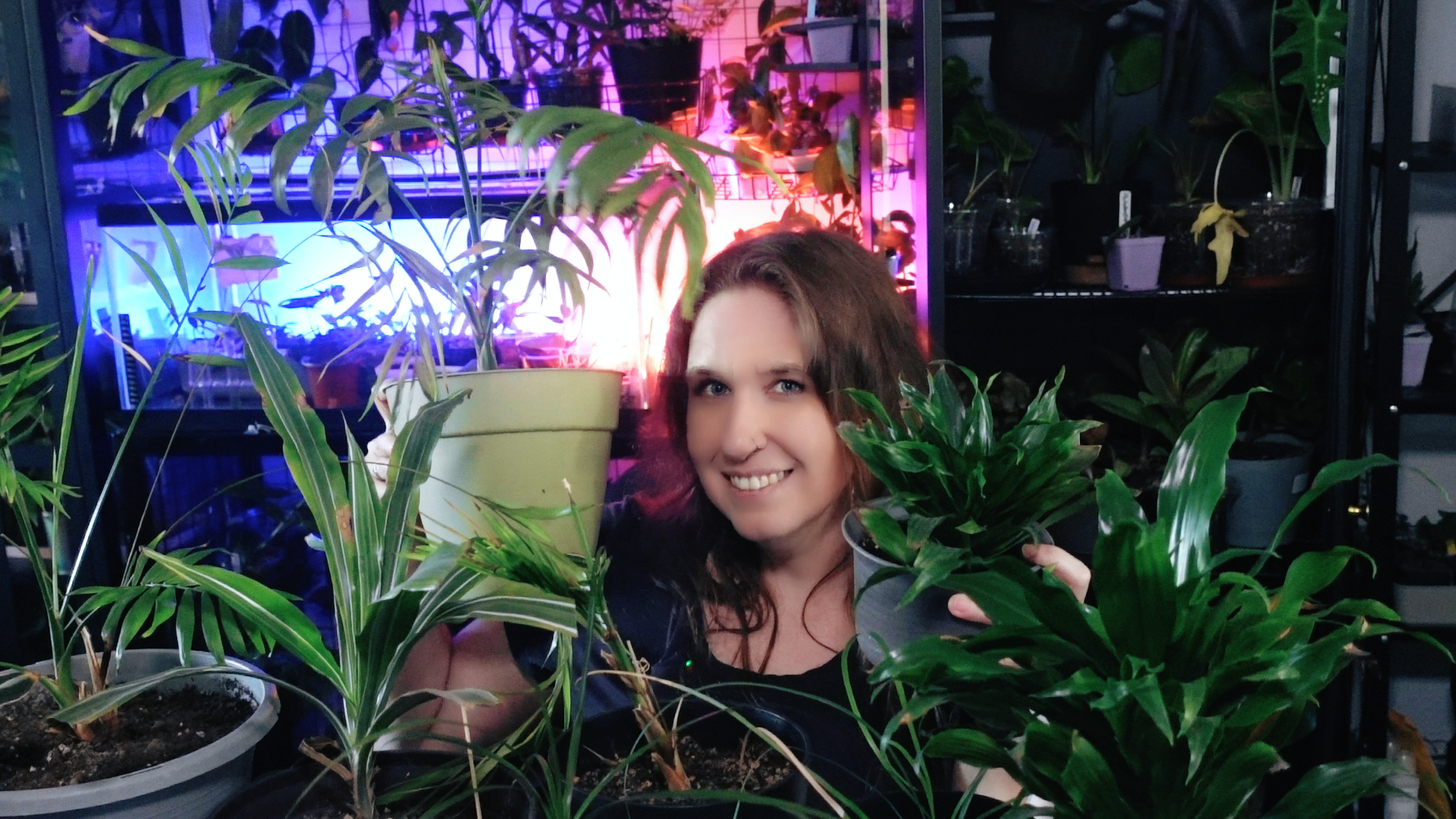
Megan is a plant expert. As well as her work as a gardening writer at House Digest, Megan also runs the YouTube channel Plantrums where she breaks down care tips backed by science for houseplants and aquatic plants. In 2025, she launched The History of Plants podcast.
What are the benefits of a terrarium?
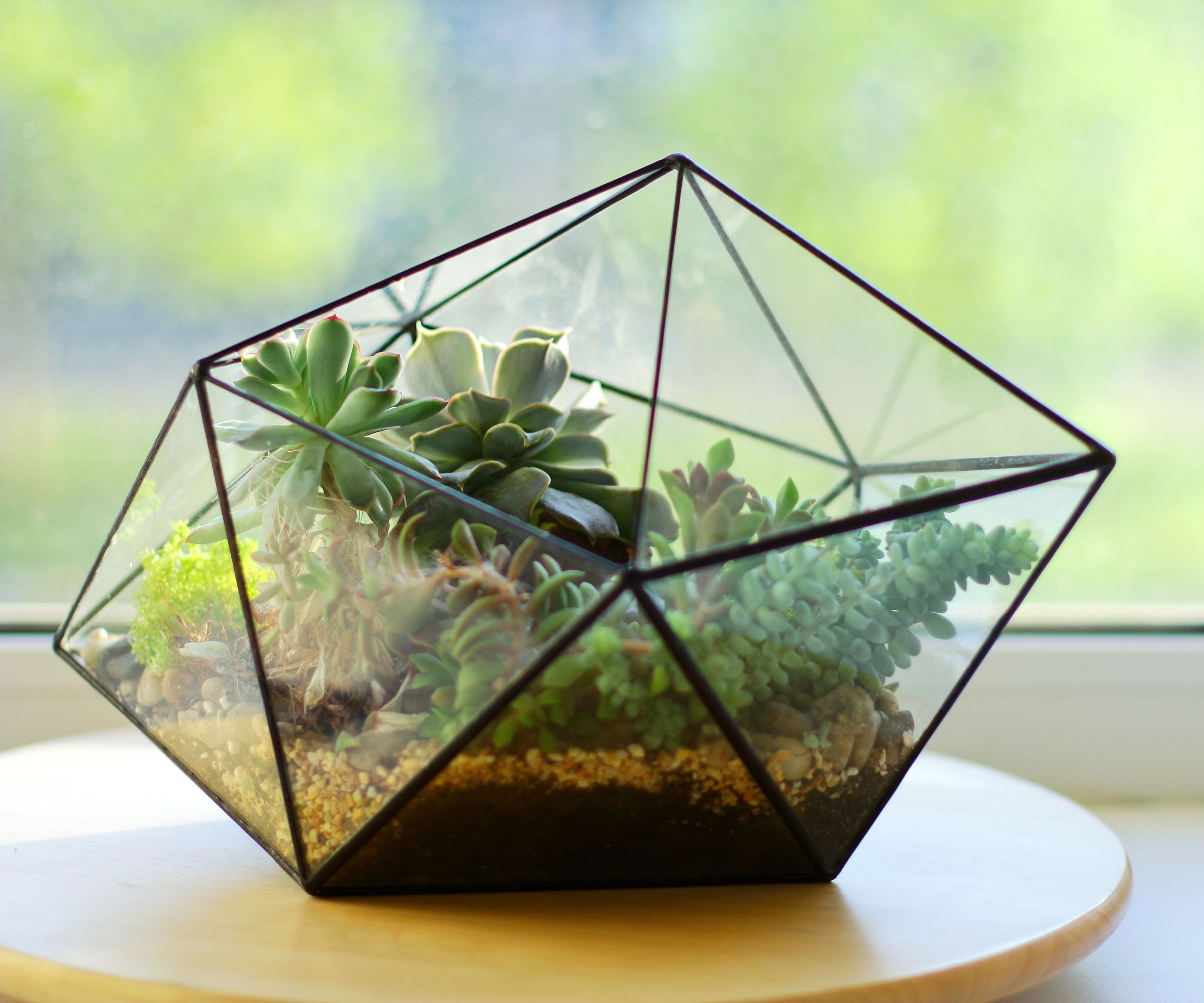
Because they're contained, terrariums are much neater than houseplants. They don't drop leaves and they won't splash mud when you water them, so they're often a better choice for minimalist homes or those who don't have time to clean.
Terrariums also tend to be low maintenance. They're either in a sealed, self-sustaining microclimate, or the terrarium contains cacti and other succulents that don't need much watering or hands-on care. Anyone who's wrangled with a fiddle-leaf fig will know that there are plenty of houseplants out there that can be difficult to maintain.
The plants in terrariums tend to be better for low-light areas, too. Megan Brame explains that 'If the terrarium has good sealing and the right plants that prefer high humidity, you could put it anywhere that doesn’t get direct sunlight. In direct light you have a chance of the terrarium essentially cooking the plant.'
Terrariums also seal off potentially harmful plants. If you worry about keeping potentially toxic plants like ZZ plants and snake plants around dogs, cats, or kids, you can keep them in a terrarium, which seals them off from the rest of the room. This can also help to control strong scents, so if you like the look of gardenias but not the strong smell, you can block the smell from the rest of the room.
Depending on your room, terrariums can also brighten a space. Light reflects and refracts off a terrarium even with dark plants or soil inside, so a terrarium can make a room feel brighter and airier.
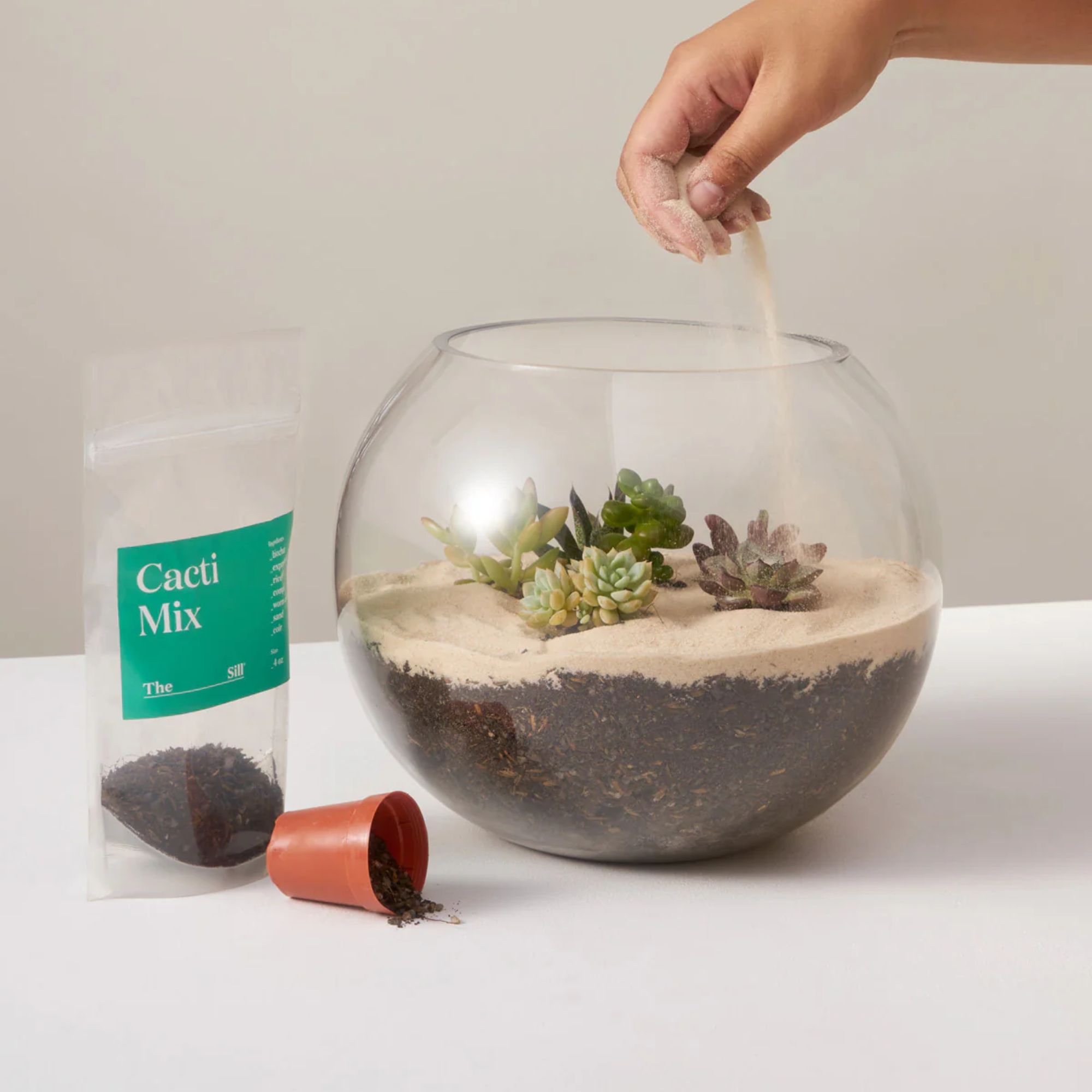
This DIY terrarium kit has everything you need to make a terrarium: a potting mix, sand, a glass bowl, and a choice of cacti and succulents.
What are the drawbacks of a terrarium?
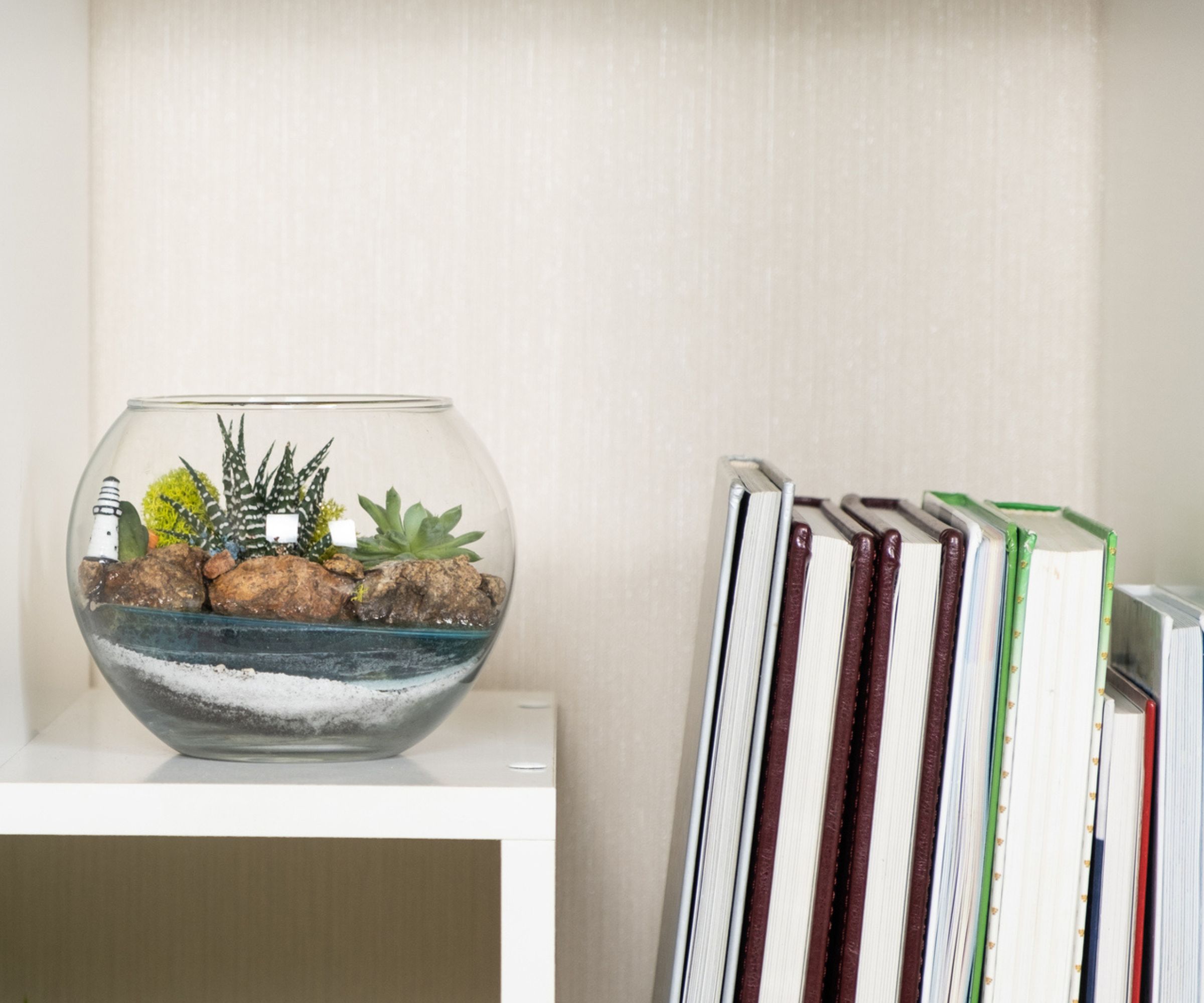
Because they're made of glass and metal, terrariums are surprisingly heavy, so they won't always work for bar carts or bookshelves in the way a small plant pot will.
While terrariums generally need less care than houseplants, when things go wrong they can go badly wrong. If you have a sealed terrarium and the climate in your terrarium fails - perhaps you've left it too near or too far from a heating duct - all the plants inside could die before you can take steps to revive them.
Terrariums are also much more expensive than houseplants. If you're on a budget and just need some greenery you can grab a potted monstera like this at Walmart for less than $15. The most basic terrarium setup with plants, soil, and glass housing will cost at least twice that, and more for a stylish, durable terrarium.
Because they're sealed, terrariums don't bring the air-freshening benefits of houseplants.
Terrariums are also more susceptible to pest infestations than houseplants. They have much higher humidity which is perfect for mealybugs and fungus gnats, so if you hate dealing with bugs, a terrarium may not be the best choice.
What are the benefits of a houseplant?
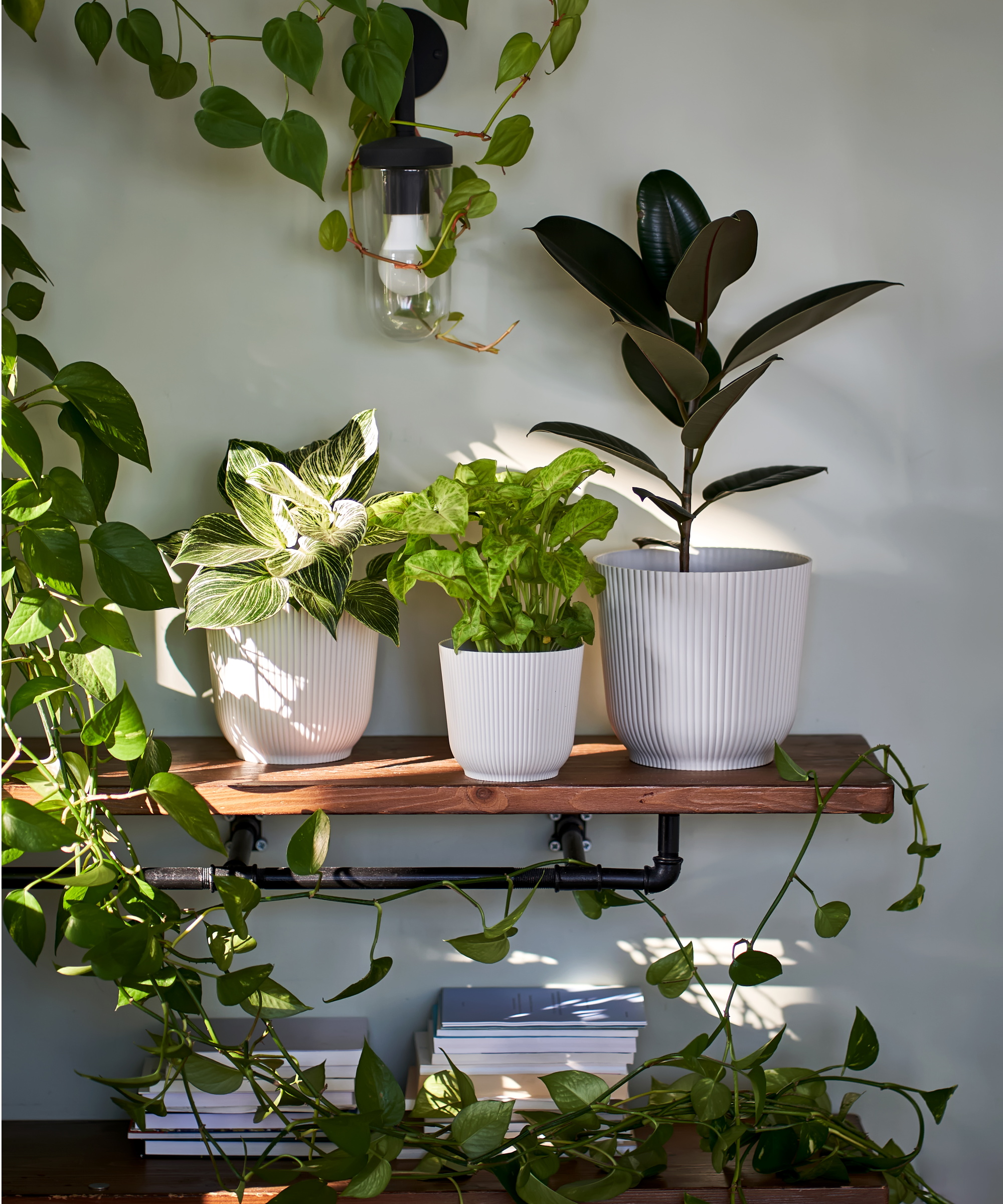
There's more variety with houseplants. Most terrariums are filled with small, drought-resistant cacti and succulents, and this can become a little samey. This isn't the case with houseplants, where you can mix colorful orchids with moody, dark rubber plants for a striking effect. With houseplants, you could place a small trailing plant on a bookshelf or keep a huge fern in a corner for interest. This sort of variety is impossible with terrariums. In most cases, terrariums all look very similar.
Though houseplants need more care than terrariums, it's usually very easy. If you stick to easy houseplants, you just need to water them every few days and occasionally prune their leaves. It's more work than a terrarium, but it's hardly a chore. On top of that, houseplant issues are usually easy to troubleshoot. If a plant turns yellow it probably needs more water, or it's too close to a window or heat source, or it needs repotting. If something goes wrong in a terrarium you might have to break out the tweezers to gently reposition plants or play with the soil mix or moisture level, which is a much more technical fix.
Houseplants can fill a room with fresh air and scent, which terrariums can't because they're closed off. Terrarium plants don't move either. When the windows open in spring and summer, houseplants sway pleasantly in the breeze. Terrariums don't create this effect because they're sealed off.
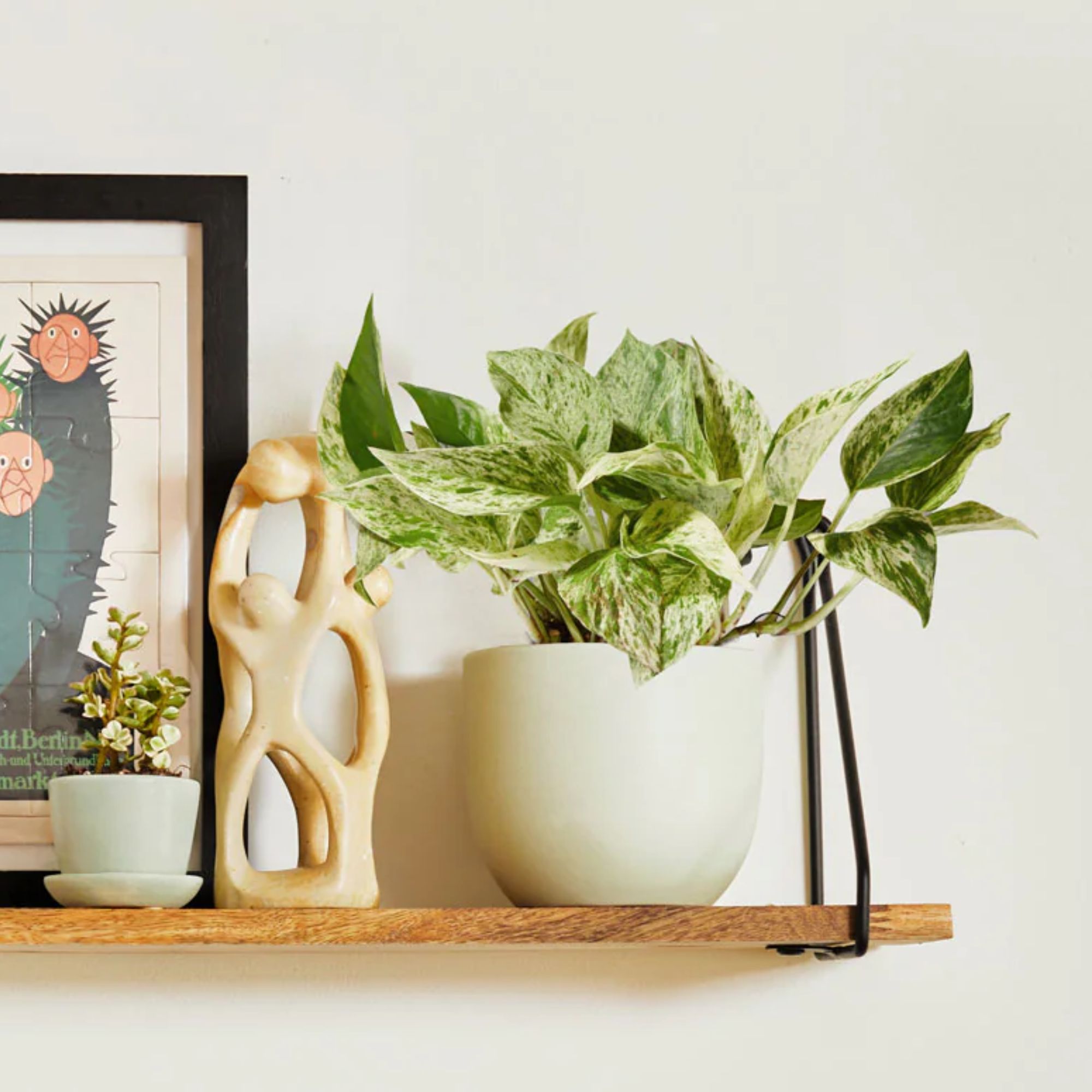
This silvery pothos is perfect for brightening a room, and like all pothos, this is easy to look after.

A red anthurium like this is perfect for introducing a little unexpected red to your home. Though relatively easy to take care of, it needs a little extra humidity on its leaves from time to time.
What are the drawbacks of a houseplant?
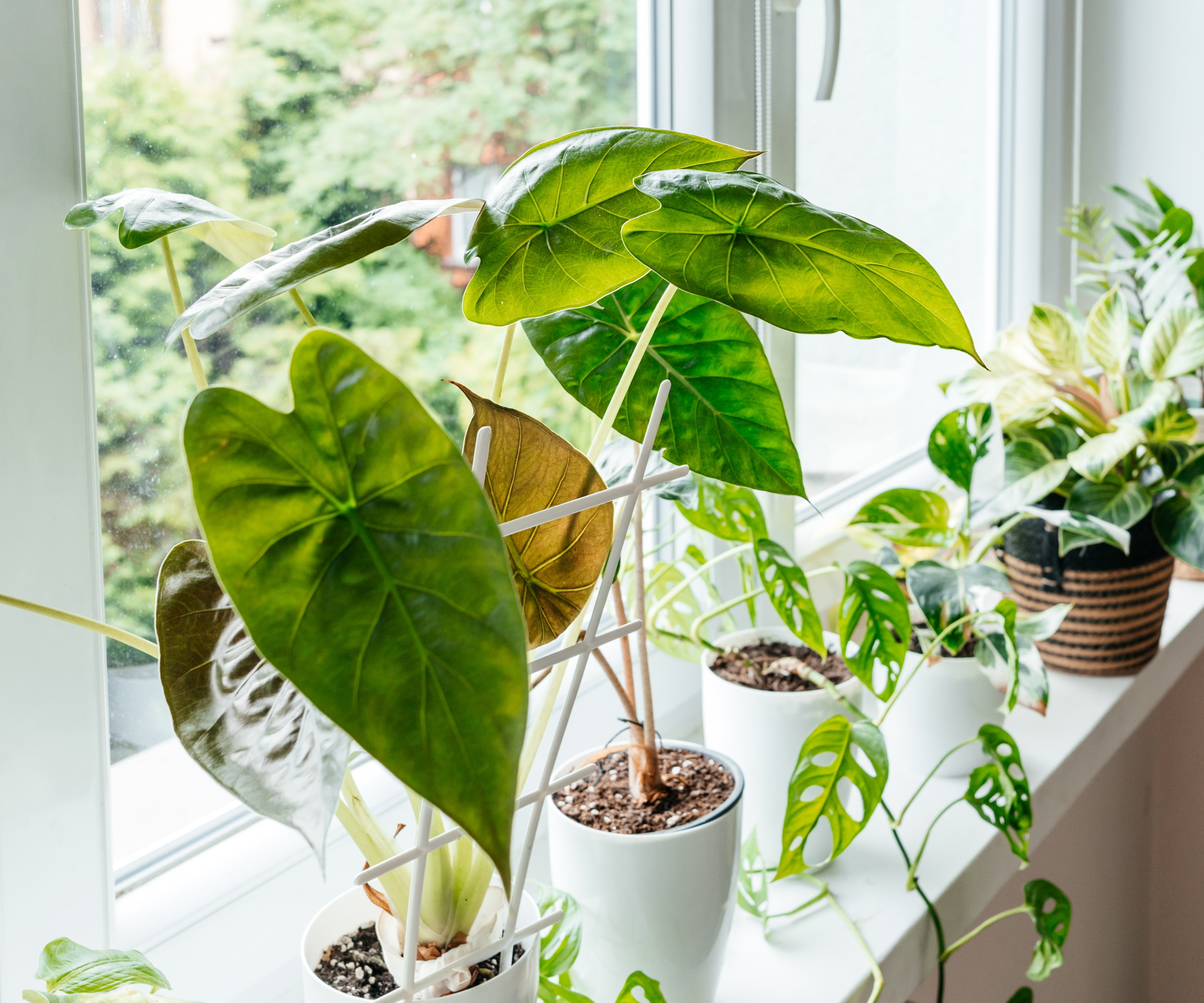
Houseplants require a lot of care and attention - every the hardiest and lowest-maintenance plant needs enough water and sunlight, and if you're busy this can be a pain.
Houseplants open to the air come with a lot of smells; they can bring fresh air and beautiful fragrances but also damp earth and rot. If you're at all sensitive to strong smells you might find a houseplant too much.
Houseplants are also an ongoing cost. Most terrariums are planted with succulents that grow very slowly or have a small determinate size. Most houseplants, however, grow fairly rapidly and will need to be repotted every few years. If you want a good-looking planter - who doesn't - you need to spend more than a few dollars on a brand-new pot, and the prices will increase every time the plant grows.
On top of the planter, there are all the other accessories. Certain houseplants need tropical humidity, so you need to buy a mister to keep them damp. Other plants like climbers need moss poles to support themselves, so all the add-ons can quickly mount up.
Choosing between terrariums and standard houseplants is only the start. Picking the best terrarium plants will make it much easier to create your own terrarium and ensure it works for your space, and learning about the current houseplant trends will help your space feel current.
Sign up to the Homes & Gardens newsletter
Design expertise in your inbox – from inspiring decorating ideas and beautiful celebrity homes to practical gardening advice and shopping round-ups.

As a gardens and lifestyle contributor, Alex makes sure readers find the right information to help them make the best purchase. Alex got his start in reviewing at the iconic Good Housekeeping Institute, testing a wide range of household products and appliances. He then moved to BBC Gardeners’ World Magazine, assessing gardening tools, machinery, and wildlife products.
-
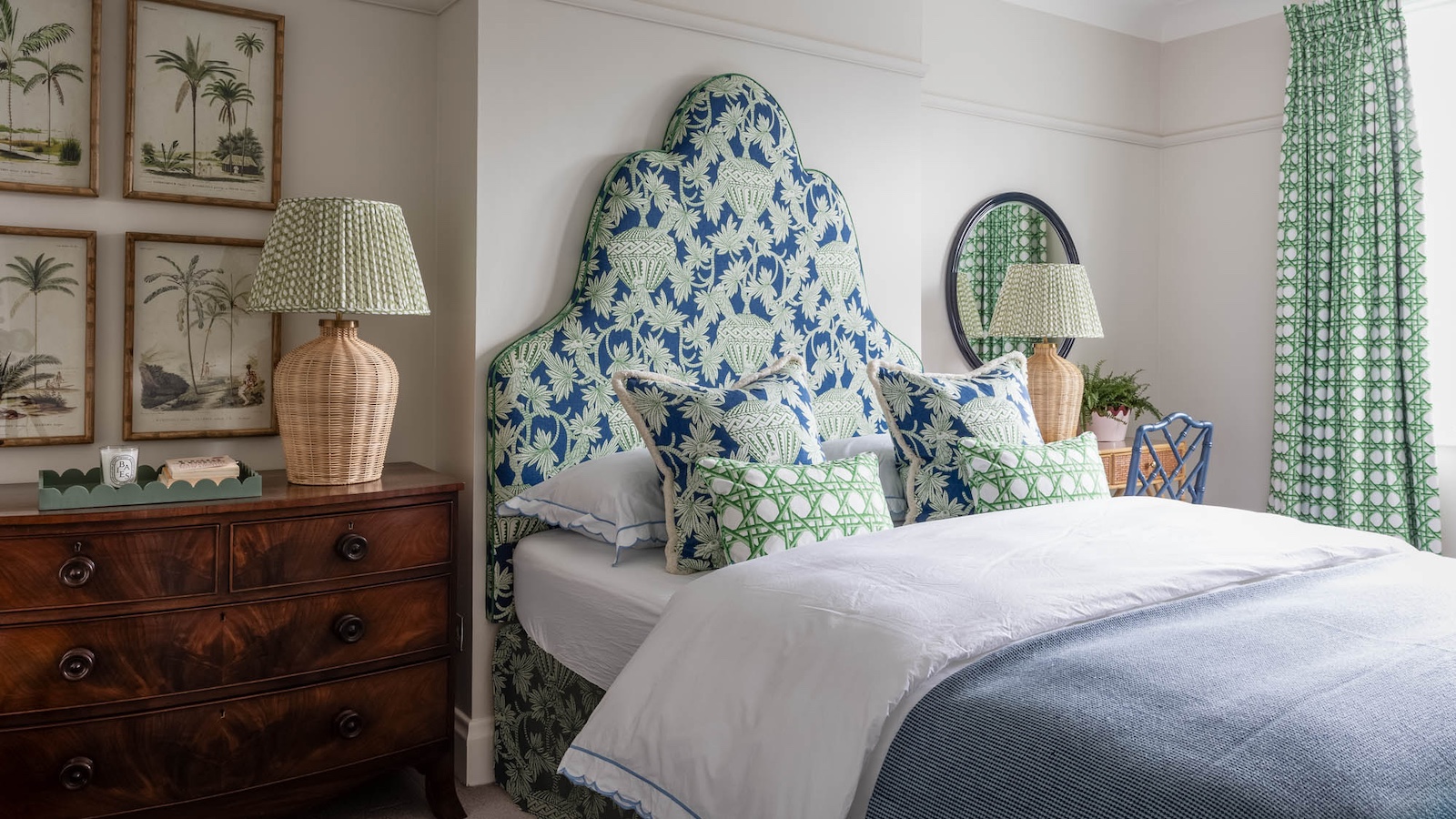 8 of the biggest small bedroom layout mistakes designers see time and time again
8 of the biggest small bedroom layout mistakes designers see time and time againThese small bedroom layout mistakes are so easy to make, but so easy to avoid too
-
 I was looking for the 'ultimate neutral' and found it in Anna Wintour's living room – it's vibrant yet chic in equal measures
I was looking for the 'ultimate neutral' and found it in Anna Wintour's living room – it's vibrant yet chic in equal measuresThe editor's living space features a bright, butter-yellow-painted accent wall, which pairs perfectly with an orange rug and floral sofa
